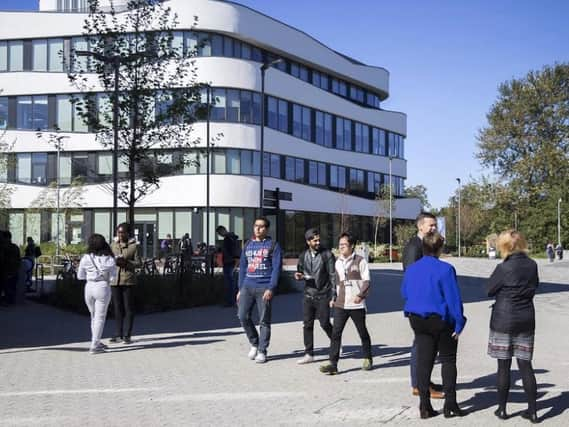Research paper suggests 4,000 Northamptonshire lives were saved by lockdown measures


The Covid-19 national lockdown possibly saved 4,000 lives in Northamptonshire according to an early research paper looking into how the virus spreads.
The report, which was co-written by the Northampton of University’s vice chancellor Professor Nick Petford and Professor Jackie Campbell, a statistician in the university’s health education faculty, concluded that the death toll could have been six times the 715 tragic deaths recorded, if the lockdown had not happened.
Advertisement
Hide AdAdvertisement
Hide AdBased on data published by the Office for National Statistics on July 24 which concentrates on the months of March through to June, the report, which has been published on website Medrxiv, was carried out in order to better understand Covid-19 fatalities and how the virus transmits in a community.
The report, which has not undergone peer review and therefore will not guide clinical practice or be treated as established fact by the scientific community, says: “Our goal is to combine observations with mathematical models to help prepare for better long -term planning in event of a second (or more) waves of Covid-19, should it occur.”
The first recorded death in Northants was on March 17 and the research study presents two scenarios, one in which the virus was allowed to run its course for 120 days. The second scenario followed the actual scenario, in which the government introduced lockdown seven days after the first Northants death on March 24.
The possible death tally was calculated by using a statistical SEIR model, which uses population figures and divides the community into people who are susceptible, exposed to the virus, infectious and recovered.
Advertisement
Hide AdAdvertisement
Hide AdIt found: “Allowed to spread uninhibited, total predicted deaths exceeded 4500 against an actual registered of 715, six times higher than recorded. In contrast the ‘with reduction’ scenario predicts 633 deaths over the same period.
“The ‘with reductions’ scenario model implies 135,800 discrete exposures to the virus over the simulation period, equating to approximately 18 per cent of of the total population. This value is significantly in excess of cases reported for Northamptonshire and is received with caution. It is however consistent with evidence for significant under reporting of infections during the initial phase of the pandemic.”
Testing during the months the report looked at was not widespread in the county, with only healthcare workers and those in hospital and care homes routinely tested.
It has only been in recent months that more testing has been accessible in the county after the government sent in more testing capacity after a spike in infection rates during July and August. To date 5,514 people in the county have tested positive for the virus. The biggest outbreak was at the Greencore sandwich factory in the town with around 300 workers testing Covid-19 positive.
Advertisement
Hide AdAdvertisement
Hide AdThe report goes on to look at recovered cases and estimates that 40 per cent of the Northamptonshire population would need to be vaccinated to ensure herd immunity and suggested Northampton would be a priority target for immunisation.
It concludes: “Initial results show Northamptonshire mortality rates due to Covid-19 are higher than both the regional and national averages. Northampton is the single biggest contributor to mortality rates, with South Northamptonshire the lowest. The trend follows current known distributions in health inequalities. The introduction of the national restrictions (social distancing) may have resulted in up to 4,000 fewer deaths in Northamptonshire. Estimates of recovery rates suggest up to 18 per cent of individuals in the county may have been infected requiring any future immunisation programme to target less than 40 per cent of the Northamptonshire population overall.”
A vaccine is not yet available, although a number of trials are taking place. Kate Bingham, the head of the government’s vaccine task force, told the Financial Times this week that if a vaccine is developed not everyone would receive the vaccine, only those at risk.
A message from the Editor:
Thank you for reading this story on our website. While I have your attention, I also have an important request to make of you.
Advertisement
Hide AdAdvertisement
Hide AdIn order for us to continue to provide high quality and trusted local news on this free-to-read site, I am asking you to also please purchase a copy of our newspaper when you do your weekly shop.
Our journalists are highly trained and our content is independently regulated by IPSO to some of the most rigorous standards in the world. But being your eyes and ears comes at a price. So we need your support more than ever to buy our newspapers during this crisis.
With the coronavirus lockdown having a major impact on many of our local valued advertisers - and consequently the advertising that we receive - we are more reliant than ever on you helping us to provide you with news and information by buying a copy of our newspaper.
Thank you
David Summers